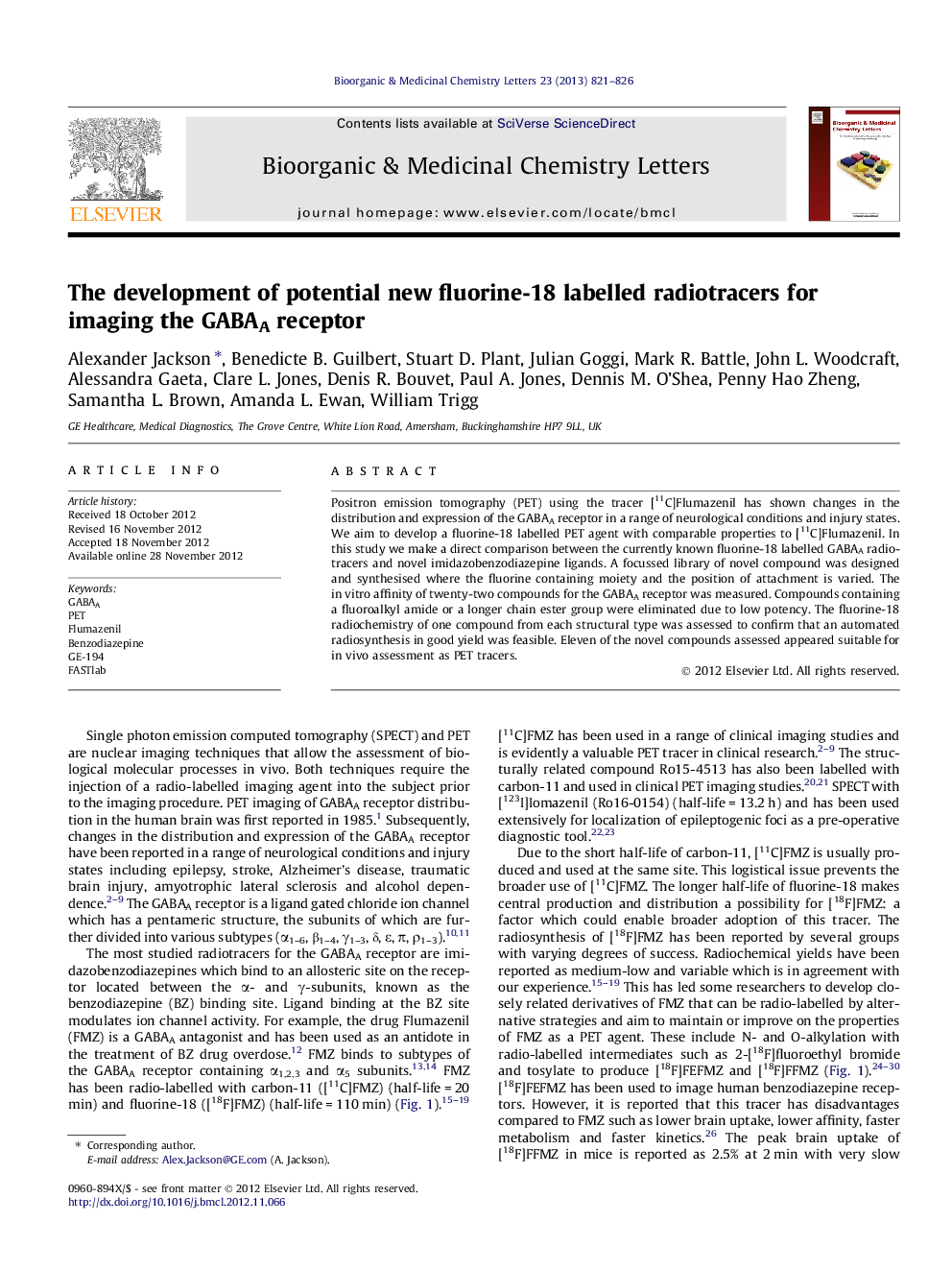| Article ID | Journal | Published Year | Pages | File Type |
|---|---|---|---|---|
| 1369386 | Bioorganic & Medicinal Chemistry Letters | 2013 | 6 Pages |
Positron emission tomography (PET) using the tracer [11C]Flumazenil has shown changes in the distribution and expression of the GABAA receptor in a range of neurological conditions and injury states. We aim to develop a fluorine-18 labelled PET agent with comparable properties to [11C]Flumazenil. In this study we make a direct comparison between the currently known fluorine-18 labelled GABAA radiotracers and novel imidazobenzodiazepine ligands. A focussed library of novel compound was designed and synthesised where the fluorine containing moiety and the position of attachment is varied. The in vitro affinity of twenty-two compounds for the GABAA receptor was measured. Compounds containing a fluoroalkyl amide or a longer chain ester group were eliminated due to low potency. The fluorine-18 radiochemistry of one compound from each structural type was assessed to confirm that an automated radiosynthesis in good yield was feasible. Eleven of the novel compounds assessed appeared suitable for in vivo assessment as PET tracers.
Graphical abstractPositron emission tomography (PET) using the tracer [11C]Flumazenil has shown changes in the distribution and expression of the GABAA receptor in a range of neurological conditions and injury states. We aim to develop a fluorine-18 labelled PET agent with comparable properties to [11C]Flumazenil. In this study we make a direct comparison between the currently known fluorine-18 labelled GABAA radiotracers and novel imidazobenzodiazepine ligands. A focussed library of novel compound was designed and synthesised where the fluorine containing moiety and the position of attachment is varied. The in vitro affinity of twenty-two compounds for the GABAA receptor was measured. Compounds containing a fluoroalkyl amide or a longer chain ester group were eliminated due to low potency. The fluorine-18 radiochemistry of one compound from each structural type was assessed to confirm that an automated radiosynthesis in good yield was feasible. Eleven of the novel compounds assessed appeared suitable for in vivo assessment as PET tracers.Figure optionsDownload full-size imageDownload as PowerPoint slide
